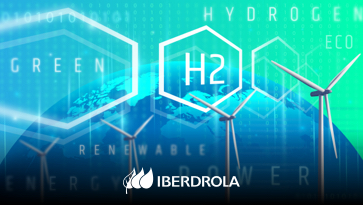Unveiling Global Trends: Exploring Hydrogen Production by Country
Understanding Hydrogen Production
Hydrogen production is a key component of the global energy landscape, with various countries around the world investing in hydrogen as a clean and versatile fuel source. Hydrogen can be produced through several methods, including steam methane reforming, electrolysis, and biomass gasification. Each method has its advantages and challenges, but all contribute to the growing interest in hydrogen as a sustainable energy solution.
Leading Players in Hydrogen Production
Several countries are leading the way in hydrogen production, leveraging their resources and expertise to drive innovation and investment in hydrogen technologies. Countries such as Japan, Germany, and the United States have been at the forefront of hydrogen research and development, investing heavily in infrastructure, research, and pilot projects to advance the hydrogen economy. These countries are exploring various pathways for hydrogen production, including renewable energy-based electrolysis and carbon capture and storage (CCS) technologies.
Japan: Pioneering the Hydrogen Economy
Japan has emerged as a global leader in hydrogen production and utilization, with ambitious plans to become a “hydrogen society” by 2050. The Japanese government has launched initiatives such as the Fukushima Hydrogen Energy Research Field and the Green Ammonia Consortium to promote hydrogen production, storage, and utilization. Japan is also investing in hydrogen infrastructure, including hydrogen refueling stations and hydrogen-powered vehicles, to support the transition to a hydrogen-based economy.
Germany: Driving Innovation in Renewable Hydrogen
Germany is another key player in the global hydrogen landscape, with a strong focus on renewable hydrogen production. The German government has set ambitious targets for hydrogen production and utilization, aiming to become a global leader in renewable hydrogen technologies. Germany is investing in research and development of electrolysis technologies, as well as supporting pilot projects and demonstration plants to showcase the potential of renewable hydrogen. The country’s commitment to renewable energy and decarbonization has positioned it as a key player in the transition to a low-carbon hydrogen economy.
United States: Harnessing Diverse Energy Sources
The United States boasts a diverse energy landscape, with abundant resources and expertise in hydrogen production. The U.S. government has launched initiatives such as the Hydrogen and Fuel Cell Technologies Office and the H2@Scale program to accelerate the development and deployment of hydrogen technologies. The United States is exploring various pathways for hydrogen production, including natural gas reforming with CCS, electrolysis using renewable energy, and biomass gasification. With its vast resources and innovative spirit, the United States is poised to play a leading role in the global hydrogen economy.
China: Investing in Hydrogen Infrastructure
China has emerged as a major player in the global hydrogen market, with significant investments in hydrogen production and utilization. The Chinese government has launched initiatives such as the Hydrogen Energy and Fuel Cell Development Plan to promote hydrogen technologies and infrastructure development. China is investing in electrolysis technologies, hydrogen refueling stations, and hydrogen-powered vehicles to support the transition to a hydrogen-based economy. With its large market size and ambitious goals for decarbonization, China is expected to



